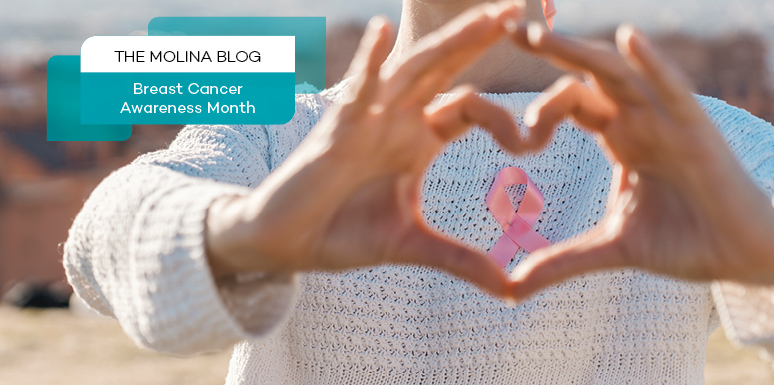October 02, 2023 / Molina Healthcare

Women can survive breast cancer when it is found and treated early. Women should begin to self-examine their breasts at the age of 20.
What is a breast self-exam (BSE)?
A breast self-exam helps you look for early signs of breast cancer. This exam allows you to get familiar with the size and shape of your breasts. Although, the American Cancer Society does not recommend regular clinical breast exams or self-exams as a breast cancer screening tool, this does not mean they should never be done. There are women who do self-exams to keep track of how their breast should look and feel.
When to do a BSE?
If you still menstruate, do a BSE two to three days after your period ends.
If you no longer menstruate, pick a day out of each month. It can be the first of the month or on the 15th day of each month. The idea is to not forget to do so. Create a monthly task on your phone or planner so you do not forget.
How to do a BSE
If this your first time doing a breast exam or if you do not know if you are doing it correctly, do not worry. A breast self-exam is easy, does not take much of your time and can be done at the comfort of your home.
You can do a breast self-exam one of three ways:
1. Mirror exam
Place your hands on your hips. Press firmly to flex your chest muscles. Look at each breast carefully to spot any dimpling or puckering.
2. Shower exam
Women will often do a standing exam while they shower. This is because the skin is easier to examine when it is slippery.
3. Lying down exam
When you are lying down, your breast tissue spreads out evenly along the chest wall. In this position, you can easily examine both your breast and wider chest area.
To check your breast while laying down, follow these steps:
If you find any changes in your breast that are of concern, see your doctor. It is normal to panic or get scared, but it is also important to remember that a lump is not always cancer.
While a self-breast exam is useful in helping spot breast cancer it should not take the place of a clinical breast exam or a mammogram.
Visiting your doctor often helps keep you healthy. For women it is important that you see both your primary care doctor (PCP) and gynecologist once a year. As you get older, screenings change.
Along with a monthly self-exam and a regular check-up make sure to schedule a mammogram.
What is a mammogram and why is it important?
A mammogram is the best way to find breast cancer early. It spots breast cancer at an early on, even before it is big enough to see or feel.
American Cancer Society guidelines for women who are at risk.
For more information on how to schedule a mammogram, visit: https://www.nationalbreastcancer.org/how-to-schedule-a-mammogram/.
Sources:
https://www.chop.edu/conditions-diseases/breast-self-examination
https://www.breastcancer.org/screening-testing/breast-self-exam-bse
https://www.nationalbreastcancer.org/how-to-schedule-a-mammogram/
https://health.gov/myhealthfinder/healthy-living/sexual-health/get-your-well-woman-visit-every-year
Category: Disease / Women's Health